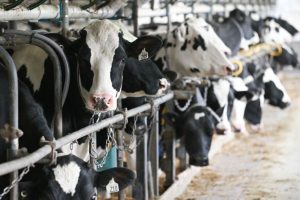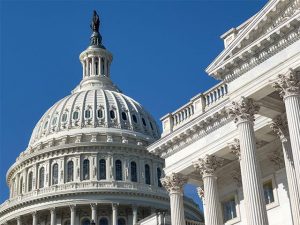
At a meeting with farm organization leaders, he was accompanied by U.S. Trade Representative Katherine Tai and U.S. Rep. Cindy Axne, D-IA, who is facing a tough re-election battle in November.
In addition to discussing record investments in conservation in the Inflation Reduction Act and expansion of biofuels policy, Vilsack talked about how higher commodity prices have benefitted farmers.
One of the reasons commodity prices are better is “because we are on par for a record year in exports,” Vilsack said, while noting the U.S. Department of Agriculture continues to look for ways to maintain and expand presence in existing markets and open up new trade opportunities.
USDA data indicates that U.S. ag exports in fiscal year 2022 are projected to reach a new record in terms of value. In May, the department boosted its forecast by $7.5 billion from the February forecast to $191 billion. If these hold as expected, consider some of these projected increases:
• Corn exports are forecast $2.2 billion higher to $19.1 billion due to record volumes and higher unit values.
• Overall grain and feed exports are projected $3.8 billion higher at $46.7 billion, with gains across all commodities except rice.
• Cotton exports are forecast at a record $9.0 billion, up $1.0 billion from the previous forecast, driven by higher unit values.
• Soybean exports are projected up $1 billion to a record $32.3 billion as higher volumes more than offset lower unit values. Total oilseed and product exports are forecast $700 million higher to a record $44.3 billion.
• Overall livestock, poultry, and dairy exports are projected to increase by $1.2 billion to $40.4 billion, with gains across all major commodities except pork. Beef and veal exports are projected to increase by $700 million on higher unit values as demand in East Asia is expected to remain firm.
• The projection for ethanol exports is forecast at a record $3.8 billion, up $900 million from the previous forecast due mainly to higher unit values. Horticultural exports are unchanged at $38.5 billion.
Farmer leaders who attended the meeting said they were thankful for all that Vilsack and Tai have done to work on United States-Mexico-Canada Agreement compliance, launch the Indo-Pacific Economic Framework, and work to gain market access in countries like Vietnam and India.
“Still, there remain big challenges on the ag trade front,” noted Steve Noah, president of the Board of Farmers for Free Trade.
“Since the U.S. pulled out of the Trans-Pacific Partnership, the trade world has not stood still. Our competitors have been entering into trade deals left and right. Those agreements are now putting U.S. food and ag products at a competitive disadvantage. It’s hard to sell your products when farmers from other countries can compete on price,” Noah added.
He noted that USDA has estimated that retaliatory tariffs have cost American farmers $27 billion in lost ag exports. Noah and other farmers also expressed concerns about some of the remaining tariffs on imported fertilizer.
“We would request that the administration take action to open new markets and address tariffs and retaliatory tariffs so that we remain the world’s breadbasket and that rural communities, including many across Iowa, are not further impacted.
Another priority for many farm organizations is to get the top ag trade officials confirmed at both USDA and USTR. Both Vilsack and Tai are waiting on the Senate to confirm Alexis Taylor to serve as Under Secretary for Trade and Foreign Agricultural Affairs and Doug McKalip to be the chief agricultural trade negotiator at USTR.
American Soybean Association CEO Steve Censky said recently his organization and others have been urging Senate action on both nominees but the key message they’ve been sending to this administration is that “agriculture needs market access.
“Some of what’s being talked about in the Indo-Pacific Economic Framework or what’s being talked about with Kenya, is good. And talking about addressing regulatory barriers, biotech barriers, other sanitary and phytosanitary barriers—those certainly exist,” he said on the Agri-Pulse Open Mic podcast recently.
“But you also have to address tariffs. And we have not seen any willingness from this administration to address tariffs,” he said. “We are hoping that they will. Other countries are moving forward with trade agreements and we need to, too. Otherwise, U.S agriculture and America as a whole is going to lose out.”






















